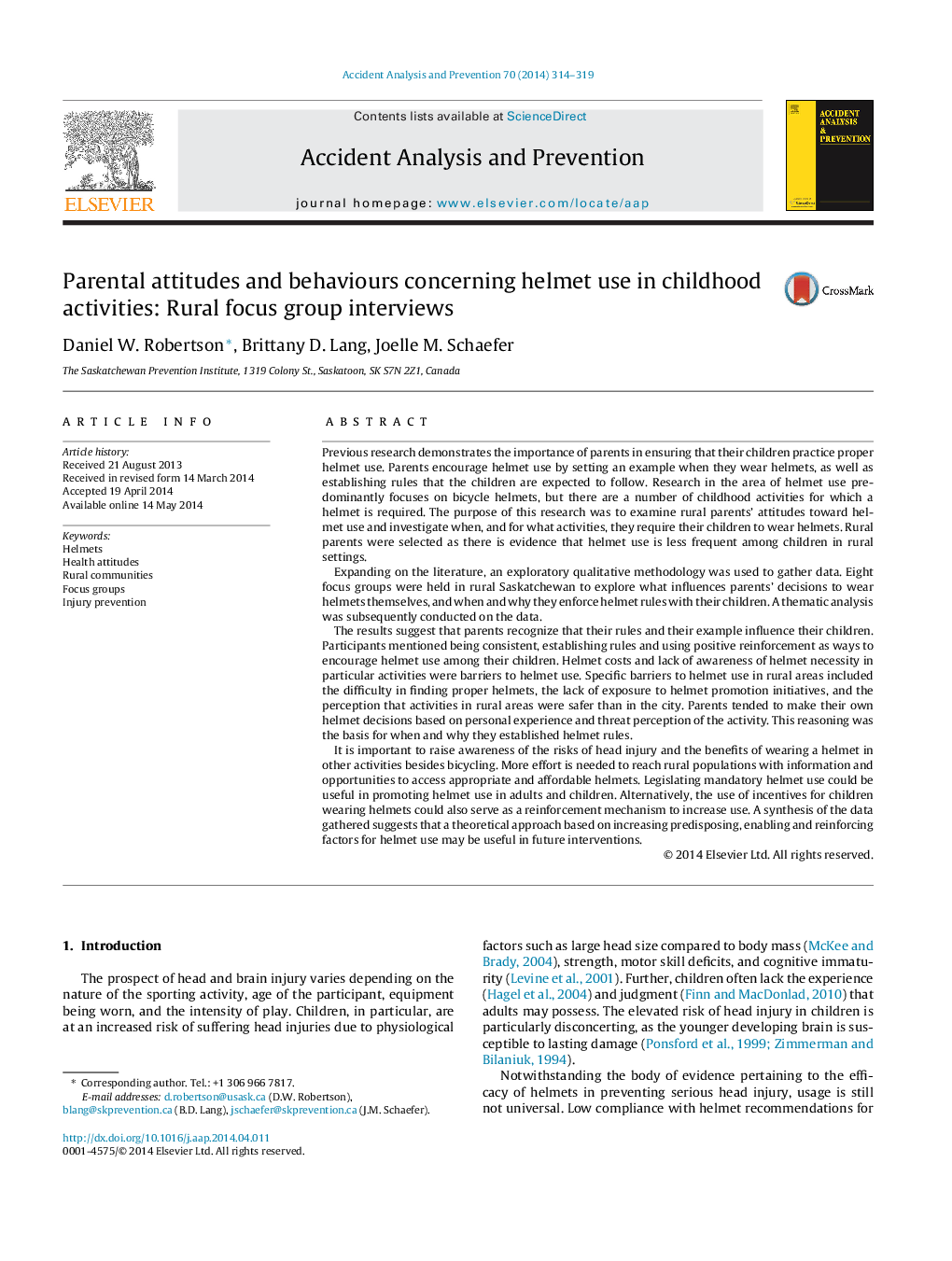| کد مقاله | کد نشریه | سال انتشار | مقاله انگلیسی | نسخه تمام متن |
|---|---|---|---|---|
| 572328 | 1452927 | 2014 | 6 صفحه PDF | دانلود رایگان |
• There are unique barriers to helmet use for rural children.
• It is important to promote helmet use in other activities in addition to bicycling.
• A main reason that parents wore helmets was to be a role model.
• Rural parents make and enforce rules based on threat perception.
• Legislating helmet use in rural areas could increase helmet use.
Previous research demonstrates the importance of parents in ensuring that their children practice proper helmet use. Parents encourage helmet use by setting an example when they wear helmets, as well as establishing rules that the children are expected to follow. Research in the area of helmet use predominantly focuses on bicycle helmets, but there are a number of childhood activities for which a helmet is required. The purpose of this research was to examine rural parents’ attitudes toward helmet use and investigate when, and for what activities, they require their children to wear helmets. Rural parents were selected as there is evidence that helmet use is less frequent among children in rural settings.Expanding on the literature, an exploratory qualitative methodology was used to gather data. Eight focus groups were held in rural Saskatchewan to explore what influences parents’ decisions to wear helmets themselves, and when and why they enforce helmet rules with their children. A thematic analysis was subsequently conducted on the data.The results suggest that parents recognize that their rules and their example influence their children. Participants mentioned being consistent, establishing rules and using positive reinforcement as ways to encourage helmet use among their children. Helmet costs and lack of awareness of helmet necessity in particular activities were barriers to helmet use. Specific barriers to helmet use in rural areas included the difficulty in finding proper helmets, the lack of exposure to helmet promotion initiatives, and the perception that activities in rural areas were safer than in the city. Parents tended to make their own helmet decisions based on personal experience and threat perception of the activity. This reasoning was the basis for when and why they established helmet rules.It is important to raise awareness of the risks of head injury and the benefits of wearing a helmet in other activities besides bicycling. More effort is needed to reach rural populations with information and opportunities to access appropriate and affordable helmets. Legislating mandatory helmet use could be useful in promoting helmet use in adults and children. Alternatively, the use of incentives for children wearing helmets could also serve as a reinforcement mechanism to increase use. A synthesis of the data gathered suggests that a theoretical approach based on increasing predisposing, enabling and reinforcing factors for helmet use may be useful in future interventions.
Journal: Accident Analysis & Prevention - Volume 70, September 2014, Pages 314–319
